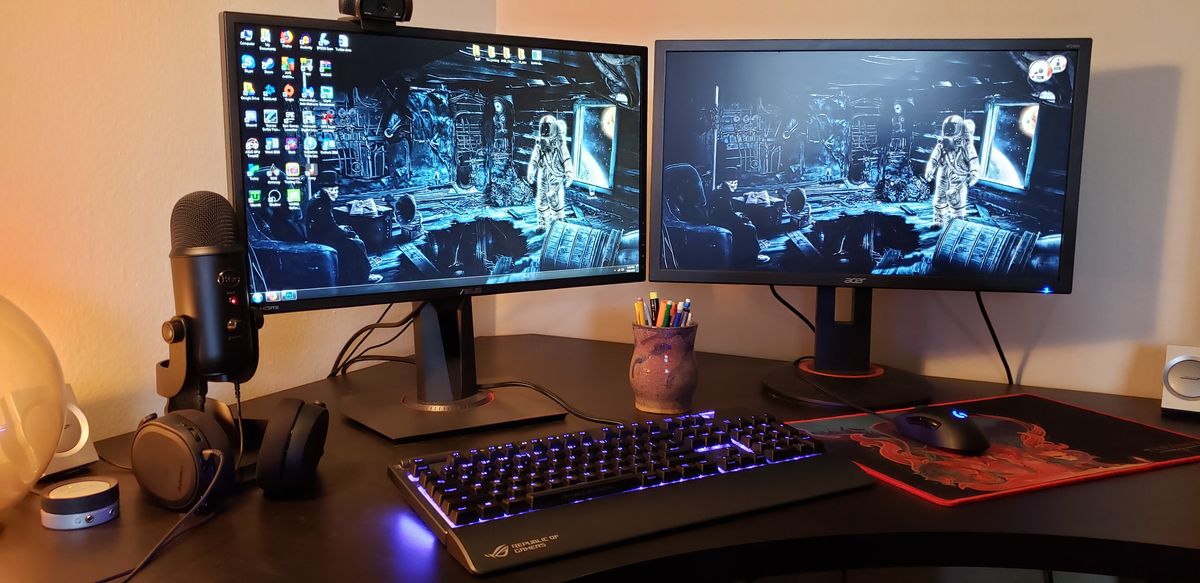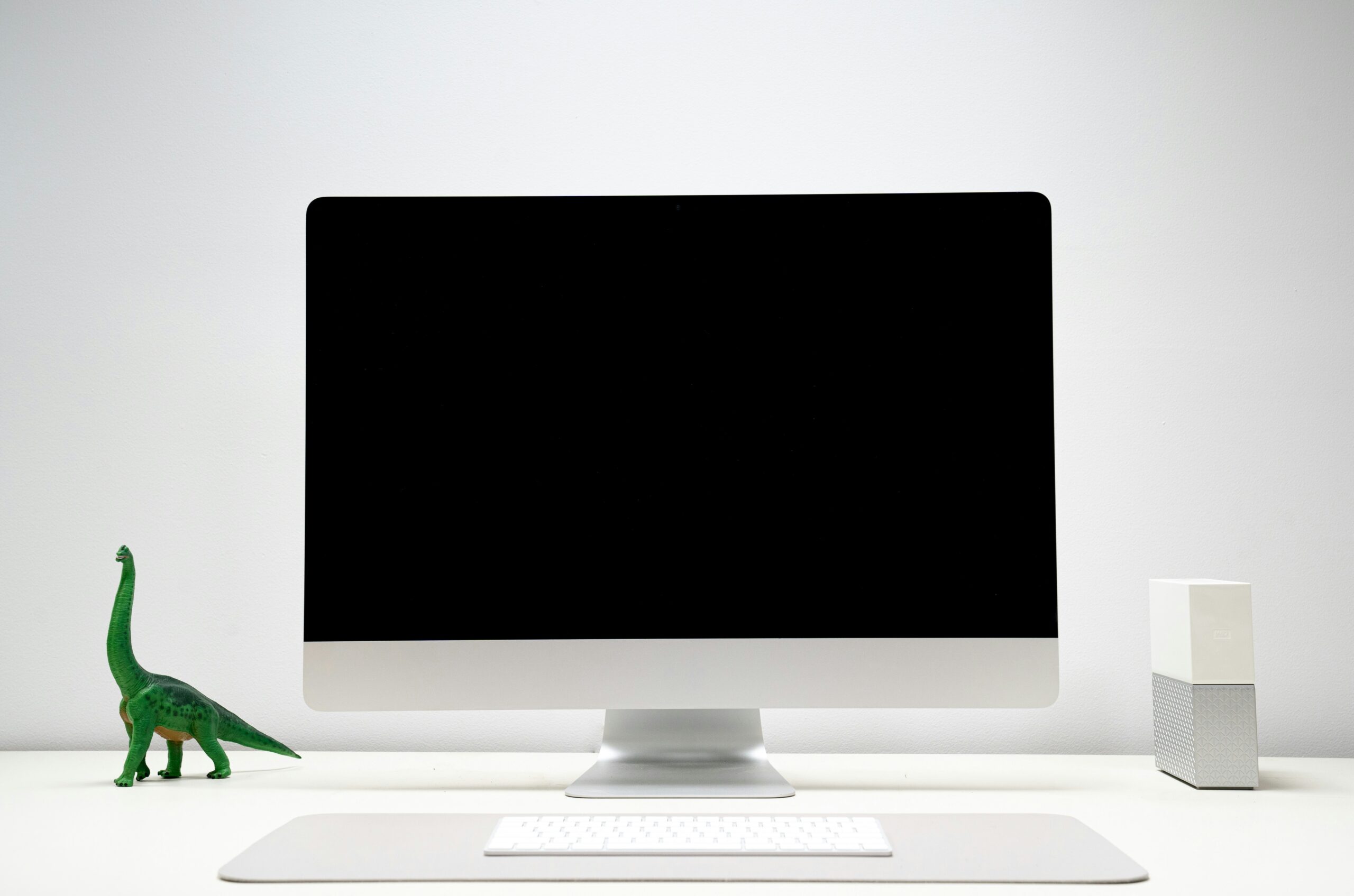
In today’s fast-paced world, a productive workspace is crucial for achieving success. One effective way to enhance your work environment is by integrating multiple monitors into your setup. Discover how to connect two computer monitors easily with our step-by-step guide. Learn about cables, ports, and setup options to optimize your dual-monitor experience. Whether you’re a professional, a gamer, or someone who thrives on multitasking, connecting two computer monitors can significantly boost your efficiency. This detailed guide will lead you through the steps of setting up dual monitors, allowing you to harness the full potential of your technology and enhance your productivity. Don’t miss out on this opportunity to take your workflow to the next level!
Table of Contents
Benefits of Using Multiple Monitors
Increased Productivity
You know, using multiple monitors has been shown to increase productivity by up to 30%. I mean, who wouldn’t want to be able to work on multiple applications at the same time, right? It saves you so much time from switching between tabs and windows, making your work process so much more efficient. I mean, it’s a no-brainer! Why wouldn’t you want to take advantage of this proven method to boost your productivity? It just makes sense!
Enhanced Multitasking–How to connect two computer monitors
Dual monitors are an absolute game-changer when it comes to managing multiple tasks at once. With one screen dedicated to your email and the other to your work document, you can boost your productivity and efficiency like never before. Say goodbye to the struggle of switching between tabs and losing focus – dual monitors make multitasking a breeze. Trust me, once you experience the convenience and increased productivity of dual monitors, you’ll wonder how you ever lived without them. Make the switch today and revolutionize the way you work.

Better Workflow Management
Using multiple monitors can greatly enhance your workflow management. By dedicating each screen to a specific task or application, you can maintain organization and focus, ultimately leading to higher productivity and a more efficient work environment. Get rid of clutter and welcome a streamlined and organized workspace.
Understanding Your Hardware Requirements
Check Graphics Card
Before you dive into setting up dual monitors, it’s crucial to check that your computer’s graphics card can handle multiple displays. Most modern graphics cards do support this, but it’s always best to double-check the specifications. Don’t take any chances – make sure your graphics card is up to the task before you start the setup process.
Monitor Compatibility
It is absolutely essential to thoroughly check the compatibility of your monitors with the connection options available on your computer. HDMI, DisplayPort, VGA, and DVI are all common connection types, so it is crucial to match the ports on your monitors and computer to ensure a smooth and seamless connection. This step should not be overlooked when setting up your workspace. It can make a significant difference in the functionality and efficiency of your setup. So, take the time to ensure everything is compatible and set up for success!
Cables and Adapters
When it comes to setting up your technology, having the right cables and adapters is crucial. Take for example, if you have a computer with only one HDMI port but need to connect two HDMI monitors, investing in an HDMI splitter or docking station is a must. By having the necessary cables and adapters on hand, you can guarantee that your technology setup will run smoothly and efficiently. Don’t underestimate the importance of having the right tools for the job!
Setting Up the Physical Connections
Identify Ports
When setting up your computer, it is absolutely crucial to identify the video output ports. Look for ports like HDMI, DisplayPort, VGA, and DVI. Make sure you have the right cables ready to connect your monitors. This is essential for a smooth and efficient setup process. Don’t overlook the importance of getting this right from the start.
Connect Monitors to Computer
You absolutely need to make sure that you connect your monitors to your computer with the correct cables. If both your computer and monitors have HDMI ports, it’s crucial that you use HDMI cables for the connection. This will help to prevent any signal loss and ensure that your setup runs smoothly. Don’t overlook the importance of securely connecting the cables – it can make all the difference in the quality of your display.
Secure Connections
It is absolutely essential to double-check all connections to guarantee they are secure. Loose connections can lead to display problems like flickering or no signal. It’s worth the extra time and effort to carefully inspect and secure each connection to avoid any potential issues. Trust me, it’s better to be safe than sorry!
Configuring Display Settings on Different Operating Systems
Windows
Sure, let’s talk about setting up your dual monitor display. First, right-click on your desktop and select ‘Display settings’ to open the display configuration menu. Then, click on ‘Detect’ to make sure both monitors are recognized by your system. After that, you can adjust the orientation, resolution, and choose which monitor will be your primary display. You can also decide how you want the screens to interact, whether it’s extended display or duplicate display. It’s a simple process and will significantly increase your productivity and multitasking capabilities. So, why not take advantage of the benefits of a dual monitor setup? Give it a try and see the difference it makes!
macOS
System Preferences
Hey there Mac user! Are you ready to take your display settings to the next level? With macOS System Preferences, it’s a breeze. Just open ‘System Preferences’ from the Apple menu, and click on ‘Displays.’ From there, you can easily arrange your displays by dragging the display icons to your preferred layout. This will make it effortless to navigate between screens. And don’t forget to fine-tune your preferences by adjusting the resolution and other display settings to your liking. You can even set your primary display by moving the menu bar to the monitor of your choice. So go ahead and personalize your display setup to perfectly meet your needs!
Linux
Display Manager
Linux users, it’s time to make the most of your specific distribution’s display manager! Whether you prefer GNOME, KDE, or another desktop environment, you have the freedom to tailor your display settings to your liking. With Linux, you can take advantage of a wide range of customization options to detect your monitors and arrange them just the way you want. Don’t settle for a generic display setup – make it your own with the flexibility of Linux. Customize your displays and make your computing experience truly yours.
Troubleshooting Common Issues
Monitor Not Detected
Hey there! If you’re having trouble with your monitor, don’t worry, we have some solutions for you. If your monitor isn’t being detected, make sure all your cables are properly connected. Restart your computer and check for any driver updates for your graphics card.
If the resolution on your monitor isn’t right, don’t worry. Just go into your display settings and manually adjust the resolution for each monitor.
And if your monitors are flickering or showing no signal, start by checking the cables for any damage and make sure they’re securely connected. You can also try using different ports or cables to rule out any hardware issues.
You’ve got this! With a little troubleshooting, you’ll have your monitor back up and running smoothly in no time.
Optimizing Your Dual Monitor Setup
Adjusting Ergonomics
Optimizing your dual monitor setup is essential for boosting your productivity and overall comfort. It all starts with adjusting the ergonomics of your workspace – position your monitors at eye level and a comfortable distance from your seating area to reduce strain on your neck and eyes.
Personalize your workspace further by customizing your display settings, such as setting different wallpapers for each monitor, adjusting brightness, and configuring screen savers. This will create a visually appealing and tailored environment for your work.
For even more efficient management of your dual monitor setup, consider using software tools like DisplayFusion or Ultramon. These tools offer a range of additional features such as taskbar extensions, window snapping, and multi-monitor wallpapers, allowing you to make the most out of your dual monitor experience. Don’t settle for a standard setup – optimize your dual monitors for a more efficient and enjoyable work experience!
Conclusion
In conclusion, using dual monitors can significantly increase your productivity and improve your overall computing experience. By following the steps outlined in this guide, you can easily set up and optimize your dual monitor setup. Take the time to try out different settings and arrangements to find what works best for you, and enjoy the benefits of a more efficient and organized workspace. Embrace the potential of dual monitors and elevate your computing experience to a whole new level!
Also read best monitor for your multitasking
FAQs
Q: Can I connect two monitors if my computer only has one video output port?
Of course! There are definitely multiple options for connecting two monitors to a computer with just one video output port. You can consider using a docking station, an HDMI splitter, or a USB to HDMI adapter to efficiently connect multiple monitors. Don’t allow a shortage of video output ports to hinder your productivity and ability to multitask – take advantage of these solutions and upgrade your work setup now.
Q: What if my monitors have different ports than my computer?
Don’t stress if your monitors and computer have different ports – there are solutions available to bridge the gap! Adapters and different cables can easily connect the two devices, so there’s no need to worry. For example, a DisplayPort to HDMI adapter can make the connection seamless. There’s always a way to make it work!
Q: Can I use two monitors with a laptop?
Yes, of course! It’s completely doable to use two monitors with a laptop. Most modern laptops have the necessary features to support dual monitors. You can simply connect them using the available video ports on your laptop, like HDMI or USB-C. It’s a convenient and efficient way to boost your productivity and multitasking skills.
Q: How do I make one monitor the primary display?
It’s really simple to make one monitor the primary display! If you’re using Windows, just go to Display settings, choose the monitor you want as the primary display, and check the box that says “Make this my main display.” If you’re on macOS, just drag the menu bar to the monitor you want in the Displays settings. Both methods are easy and will get you the result you want. Try it out and see for yourself!
Q: Why is my second monitor showing a black screen?
Hey there, I totally get how frustrating it can be when your second monitor is acting up. But don’t worry, there are some simple fixes you can try before getting too worked up. It could be something as easy as a loose connection or just needing to adjust the input settings on the monitor. Another possibility is that your graphics card may need some attention. Take a moment to check all the connections, make sure the monitor is set to the correct input source, and don’t forget to update your graphics card drivers. With a little troubleshooting, you’ll have that second monitor up and running in no time! You’ve got this!
Author’s Bio
Let me tell you about Sarah, the expert behind these informative and user-friendly tech guides. With over 10 years of experience in the tech industry, Sarah is dedicated to providing valuable content to help people make the most of their technology. Her passion for technology goes beyond her writing, as she enjoys exploring new gadgets, gaming, and spending quality time with her family. You can trust that you’re getting expert advice from a true tech enthusiast.



